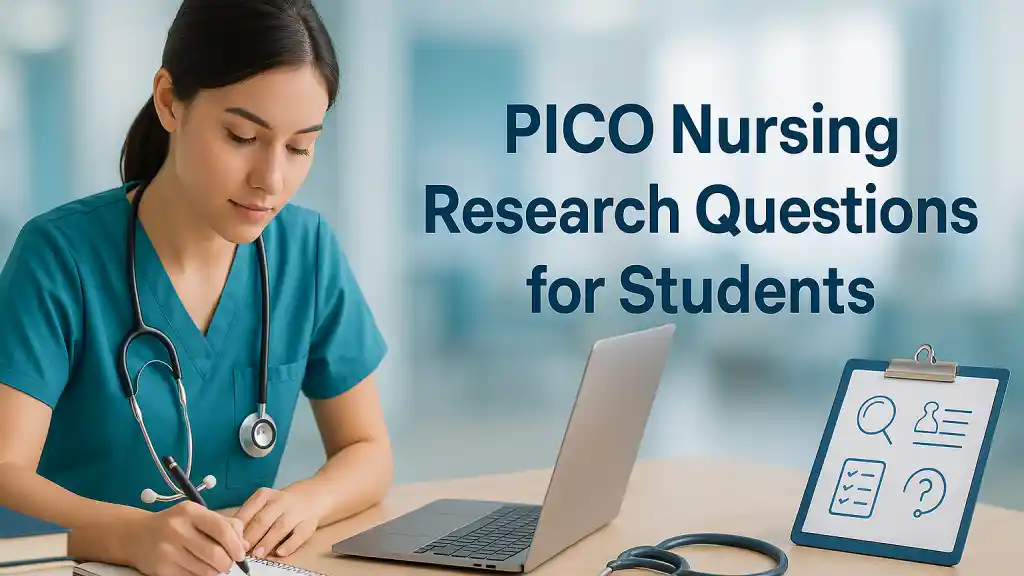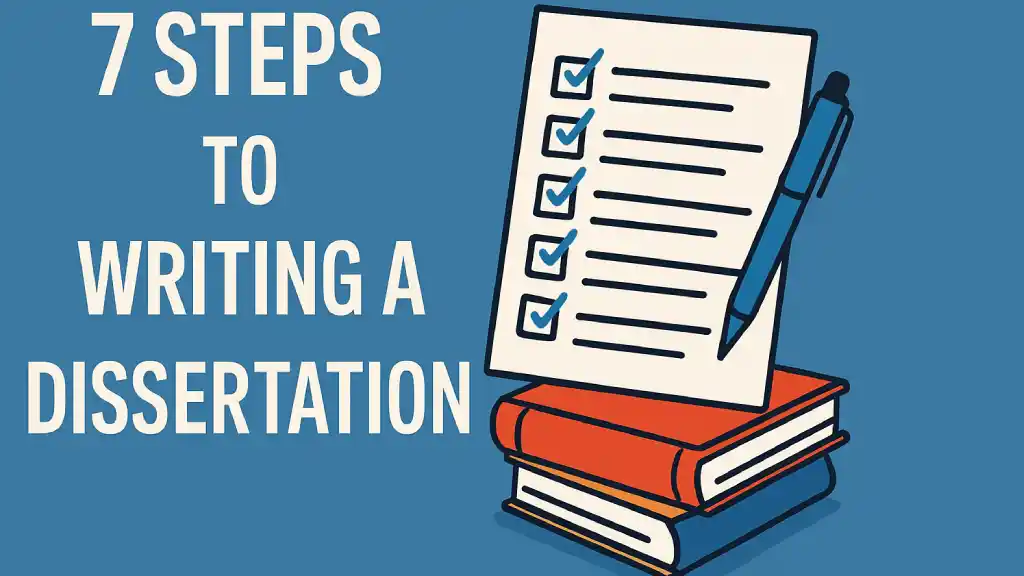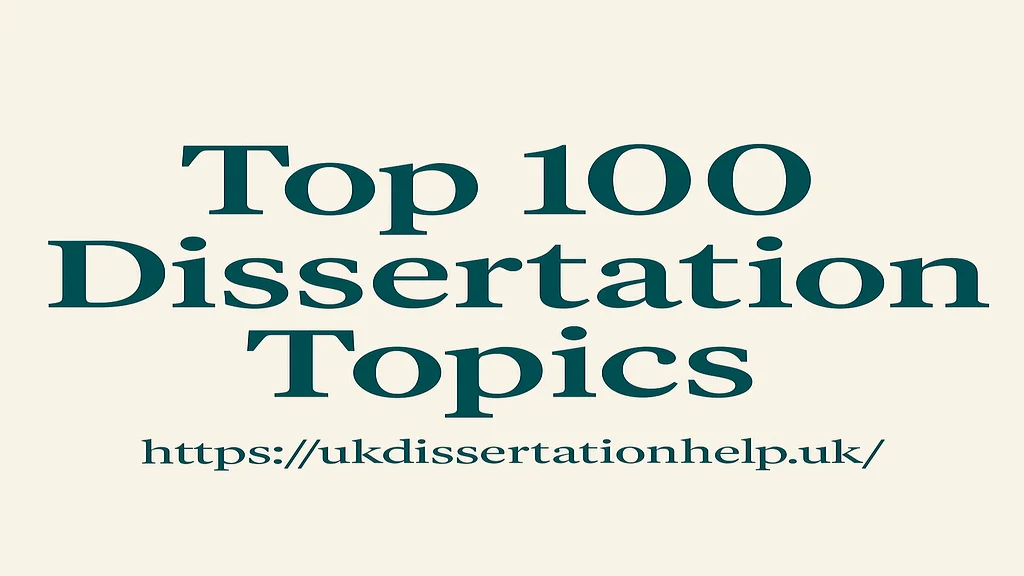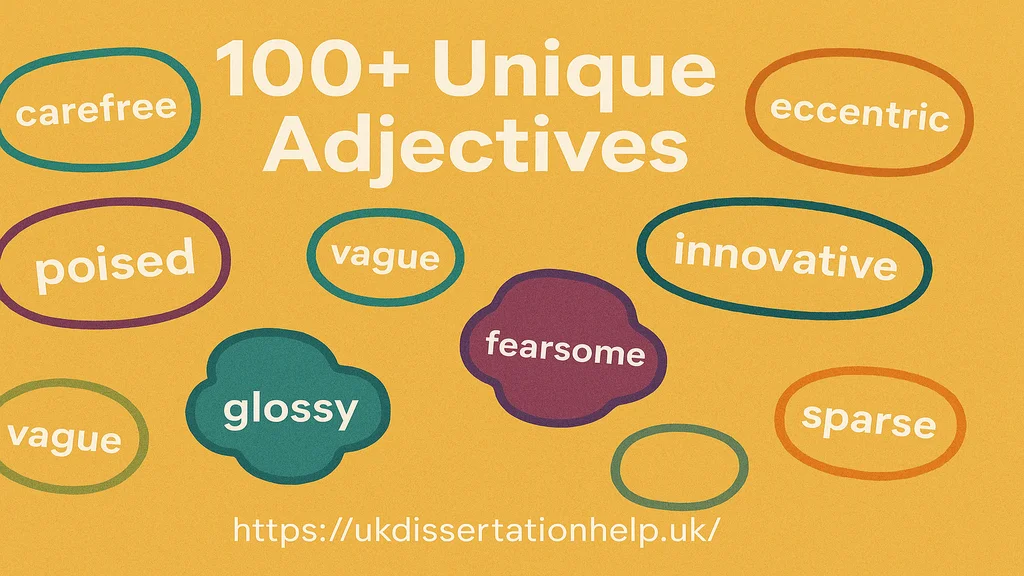101 PICO Nursing Research Questions

Posted date: 2025-07-08
Table of Contents
Are you a nurse ready to embark on your clinical research journey?
Then you must have heard about PICO and PEO. These two are the basis of developing your research question.
So, if you haven't heard about them, you better do your research before moving forward. Without them, it's like you are entering the battlefield without any weapons.
But Don't worry, you got me. Today, I will tell you everything about the PICO, as it is one of the most important ones for nurses while developing a research question as it's tied to quantitative data. At the same time, the PEO is all about qualitative data.
So, let's explore what PICO is and how you can formulate your nursing research question with this.
What is PICO?
So, the PICO stands for:
- P – Patient, Population, or Problem
- I – Intervention
- C – Comparison
- O – Outcome
In some of the cases or scenarios, an additional parameter is used called:
- T- Time Frame, Type of Study, or Type of Question
So, these elements help nurses design a perfect research question for their evidence-based nursing reports. And the entire report must center around this specific question. Thus, this structure helps you make it easy to create a clear and focused research question. Thus making it easier for you.
How to Write a PICO Question?
I know it might sound a little confusing to you. But let's just break it down for your convenience and learn how you can develop your research question based on PICO.
- The P describes the patient, people, or the problem at hand.
- Intervention is all about the kind of intervention or factor you will be using.
- Comparison is whether you have anything to compare to your intervention or factors.
- Finally, the outcome is all about what you are expecting from your research.
Example PICO Question:
Thus, here is how you will put all of these together to create your nursing research question:
"In nursing students (P), does stress management training (I) as compared to no training (C) can reduce exam stress (O)?"
So, this is how you put the pieces together in your question. Thus, your question does not always have to look the same way. But you can shuffle the elements to make it sound better.
100 Useful PICO Questions for Nursing Research
I know it might sound a little tough to you at the start. But once you get hold of it. You can easily create your questions without any hassle.
In the meantime, I have gathered a list of 101 PICO nursing research questions for you to help you save time and effort.
Here is a complete list for you. You can choose the one you are interested in:
- Does daily Chlorhexidine bathing reduce infection rates in ICU patients?
- Can you reduce pressure ulcers in elderly patients with bedsores by repositioning?
- Do pain diaries work in pain management for cancer patients?
- Is the use of intravenous fluid intervention a better treatment for infants under fatal conditions?
- Do skin-to-skin contact of the infant with the mother a more assured way of ensuring neonatal mortality when compared to drying and wrapping?
- Is white noise effective in improving sleep among ICU patients
- Which is the most effective method for administering oxygen to children aged 2 to 3 months during oxygenation?
- Is cognitive behavioral therapy an effective way to reduce levels of anxiety among teenagers
- Is negative therapy wound pressure a more effective therapy when compared to a standard moist for dealing with patients over the age of 60 year
- Does peer support in breastfeeding mothers increase the overall timeframe?
- Can music therapy work as a good therapy for dementia patients to improve their recovery outcomes?
- What are the health outcomes of increased potassium intake in adults over the age of 21?
- Does controlling the amount of sublingual sugar benefit fully conscious children suffering from hypoglycemia?
- Does the intake of zinc pills more effective than Vitamin C for preventing cold during winter for middle-aged women?
- Is home visitation a better approach to managing teen pregnancy compared to regular school visits in rural areas?
- Is music therapy an effective mode of PACU pain management for patients who are slowly coming out from their anesthesia?
- Does the use of antibacterial foam dispensers a healthy choice for nurses?
- Is using toys as distractions during needle vaccinations for toddlers an effective method for managing pain?
- Do honey made dressing heals the wounds faster than using saline?
- What are the effects of adding beta-blockers to lower blood pressure in adult men over the age of 70?
- What are the expected outcomes for pediatric patients with MRSA?
- Is an annual mammogram necessary for detecting breast cancer in women over the age of 40?
- Does group therapy help patients with schizophrenia improve their conversational skills?
- Is it necessary to test blood glucose levels four times a day in a patient with Type 1 diabetes?
- What are the best standards for beginning and ending oxygen therapy?
- The impact of managing Prevacid before a pH probe study in pediatric patients with GERD?
- What are the probable after-effects, in the form of bruises and other injuries, of herapin injection therapy for COPD patients?
- Is there any benefits of achieving febrility in an infant for an entire day before performing a VCUG?
- What are the ethical considerations for providing placebo medication to a pediatric population suffering from mental health issues?
- Nasal swab or nasal aspirate? Which one is more effective for children suffering from seasonal flu?
- Is a sudden change in temperature harmful to neurologically devastated patients?
- What are the probable after-effects, in the form of bruises and other injuries, of herapin injection therapy for COPD patients?
- Are first-time mothers giving birth to premature babies more prone to postpartum depression compared to second or third-time mothers in similar situations?
- Is a wound vac a better alternative compared to a standard moist whilst treating an ulcer for a patient suffering from high blood pressure?
- After a diagnosis of high blood sugar levels, is monitoring blood glucose four times a day more effective in controlling Type 1 diabetes?
- What is the most effective way of cutting down the oxygen saturation levels during oxygen therapy for children suffering from urinary tract infections?
- Does prolonged exposure to chemotherapy increase the risk of cardiovascular diseases in teenagers with cancer?
- Is the intervention of flushing the heroine via lines a more effective way of treating patients with CVLs/PICCs?
- After a diagnosis of high blood sugar levels, is monitoring blood glucose four times a day more effective in controlling Type 1 diabetes?
- Do workout routines actually help patients who are suffering from hypertension?
- Does daily blood pressure monitoring help address the triggers of hypertension in males over 65?
- What are the health outcomes of having a high amount of potassium for adults over the age of 21 years?
- Can colon cancer be more effectively detected when colonoscopy is supported by an occult blood test compared to colonoscopy alone?
- Is spironolactone a better drug for reducing the blood pressure of teenagers when compared to clonidine?
- Does a regular 30-minute exercise regimen effectively reduce the risk of heart disease in adults over 65?
- What is the result of a higher amount of potassium intake among children with low blood pressure?
- Can colon cancer be more effectively detected when colonoscopy is supported by an occult blood test compared to colonoscopy alone?
- Is home visitation a better way of dealing with teen pregnancy when compared to regular school visits in rural areas?
- Are cancer patients receiving aggressive protocols involving radiation and chemotherapy more vulnerable to cachexia than those who are not?
- Does raising the head of the bed of a mechanically ventilated patient reduce the chances of pneumonia?
- For women under the age of 50, is an annual mammogram more effective in preventing breast cancer compared to one performed every three years?
- Is cup feeding an infant is better than feeding through tubes in a NICU set up?
- Do yoga an effective therapy for reducing lymphedema in patients recovering from neck cancer?
- Is the lithotomy position an ideal position for giving birth to women in labor?
- Does bullying in boarding schools increase the risk of domestic violence over 20 years?
- Do bedside shift reports help in the overall patient care for nurses?
- Does increased intake of oral contraceptives raise the risk of breast cancer in women aged 20–30 in the UK?
- Has the increased use of mosquito nets in Uganda helped reduce malaria among infants?
- Is the use of antibacterial foam dispensers a healthy choice for the nurses?
- What is the direct connection between VAP and NGT?
- Does administering pain relief medication during surgery reduce pain more effectively than administering it post-surgery?
- What are the effects of IVF bolus in controlling magnesium sulfate levels in patients suffering from asthma?
- Does melatonin work better as compared to sleep medications in elderly patients?
- Which one is better to reduce infection in ICU nurses, the gloves or hand hygiene?
- Does physical therapy improve joint functioning in elderly people with arthritis?
- Is alcohol based rub is more effective than soap for infection control among nurses?
- What are the impacts of using an intermittent straight catheter in children suffering from UTIs?
- What is the clinical relationship between congenital central hypoventilation syndrome and Hirschsprung’s disease?
- Explain the effects of IVF bolus in controlling magnesium sulfate levels in patients suffering from asthma?
- What are the consequences of vaccination in children compared to adults?
- Are ethanol locks effective in preventing catheter-based infections in infants?
- Do bilirubin levels decrease faster when more banks of lights are used to treat infants with hyperbilirubinemia?
- What is the direct connection between VAP and NGT?
- Is a dimer assay more accurate at ruling out deep vein thrombosis as compared to ultrasound?
- How can nurse-led intervention help reduce mental health issues caused by bullying in school children?
- What is the role of new regime exercises in reducing fatal heart diseases in women suffering from chronic heart diseases?
- What are the benefits of using alarm sensors in hospitals for preventing accidents among senior citizens over 65 years?
- How does stopping lipids for 4 hours help patients get the desired TG level before receiving TPN?
- How is using LP/spinal tap during the beginning of antivirals significant for children suffering from fever?
- Is there any benefits of using annual mammograms important in detecting breast cancer among women after the age of 40 years?
- What factors make detecting C deficit in children under five years difficult?
- What are the effects of adding beta-blockers to lower blood pressure in adult men over the age of 70?
- Does frequent handwashing among healthcare workers decrease the incidence of infections in hospitals?
- Is psychological intervention more effective than a placebo for people suffering from dementia?
- How is a kangaroo pump more helpful when compared to a syringe pump for pediatric patients?
- What are the probable aftereffects (such as bruises and other injuries) of heroin injection therapy in COPD patients?
- Do non-smoking adults face any risk of esophageal cancer?
- Is vitamin K prophylaxis effective in preventing vitamin K deficiency caused by neonatal bleeding?
- Is fentanyl more effective than morphine for managing pain in adults over the age of 50?
- Are new exercise regimens effective in preventing fatal heart diseases in women with a family history of cardiac disorders?
- Are alarm sensors effective in preventing accidents in hospitals for patients over the age of 65?
- Is continuous feeding during emesis more effective than temporarily stopping feeds as an intervention?
- What roles do pre-surgery cardiac nurses play in preventing depression among patients awaiting cardiac surgery?
- Is an annual mammogram necessary for detecting breast cancer in women over the age of 40?
- In adult patients with SLE, is consuming turmeric tea more effective than Plaquenil at reducing joint pain?
- Is medical intervention effective in addressing childhood obesity among school-going children?
- Can nurse-led presentations on mental health and bullying help combat these issues in public schools?
- Is flushing GT with Pedialyte a healthy measure for preventing sodium depletion?
- Why is it difficult to detect Clostridioides difficile in children under the age of 5?
- Is a sudden change in temperature harmful to neurologically devastated patients?
- What are the standard vital sign parameters for a pediatric population?
So, if you need more ideas, you can reach out to professional nursing dissertation writing help UK for help as well.
Final Thoughts
So, the concept of PICO makes your research more focused, clear, and simpler. No matter, if you are working on some nursing project, thesis, or clinical study, using this specific format, can help you create a perfect one that leads to better evidence and care in your research.
So, feel free to use the above questions based on your topic and interest. And you can always welcome to modify them too.
Just remember that a good question is the foundation of writing great research. Thus, you better choose it carefully. Best of Luck!
📌 Recent Latest Posts







